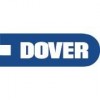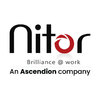Azure DevOps Engineer
50+ Azure DevOps Engineer Interview Questions and Answers

Asked in LTIMindtree

Q. Explain any terraform project that I did recently also what were the variables you defined in terraform configuration, how will you access a storage account blob container from more than one subscriptions from...
read moreExplaining recent Terraform project, accessing storage account blob container from multiple subscriptions, Azure DevOps variable group and pipeline, and brief on Ansible role.
Recently worked on Terraform project to provision Azure resources
Defined variables in Terraform configuration for resource names and sizes
Accessed storage account blob container from multiple subscriptions using shared access signature (SAS) tokens
Current project infrastructure in Azure includes virtual ...read more

Asked in LTIMindtree

Q. what are Terraform workspaces, what is a null resource in terraform, what is git fetch and how it's different from git pull, What is a load balancer in azure, what is an application gateway in azure, what are p...
read moreQuestions related to Azure DevOps Engineer role
Terraform workspaces are used to manage multiple environments with the same codebase
Null resource in Terraform is used to execute arbitrary code that doesn't create any resources
Git fetch downloads changes from the remote repository but doesn't merge them with the local branch
Load balancer in Azure distributes incoming traffic across multiple virtual machines
Application gateway in Azure is a web traffic load balancer that can als...read more

Asked in EPAM Systems

Q. What deployment strategies and automation methods did you utilize to deploy your application to Azure Kubernetes Service (AKS)?
Utilized various deployment strategies and automation methods for efficient AKS application deployment.
Implemented Blue-Green Deployment to minimize downtime and reduce risk during updates.
Used Helm charts for packaging and deploying applications, allowing for easy version control.
Employed Continuous Integration/Continuous Deployment (CI/CD) pipelines with Azure DevOps for automated deployments.
Utilized Kubernetes manifests for defining application resources, ensuring consist...read more

Asked in Dover India

Q. How will you ensure the Kubernetes cluster is up and running?
To ensure Kubernetes cluster is up and running, monitoring tools, automated alerts, and regular health checks are essential.
Set up monitoring tools like Prometheus and Grafana to track cluster health and performance metrics
Implement automated alerts to notify of any issues or failures in the cluster
Perform regular health checks using tools like kubectl commands or Kubernetes dashboard
Utilize Kubernetes self-healing capabilities to automatically restart failed pods or nodes

Asked in TCS

Q. How do you build a Docker file with a specific tag?
To build a Docker file with a specific tag, you can use the 'docker build' command with the '-t' flag followed by the desired tag.
Use the 'docker build' command with the '-t' flag to specify the tag.
Example: docker build -t myimage:latest .
Replace 'myimage' with the desired image name and 'latest' with the desired tag.

Asked in EPAM Systems

Q. How did you manage and deploy the IoT architecture on the Azure cloud?
I deployed an IoT architecture on Azure using services like IoT Hub, Azure Functions, and Stream Analytics for real-time data processing.
Utilized Azure IoT Hub for secure device connectivity and management.
Implemented Azure Functions to process incoming data from IoT devices in real-time.
Used Azure Stream Analytics to analyze data streams and generate insights.
Stored processed data in Azure Blob Storage for long-term retention and analysis.
Set up Azure Logic Apps for automate...read more
Azure DevOps Engineer Jobs




Asked in EPAM Systems

Q. How is the backend data flow integrated in IoT, and what does that flow entail?
Backend data flow in IoT involves data collection, processing, storage, and analysis for actionable insights.
Data Collection: IoT devices gather data from sensors (e.g., temperature sensors in smart homes).
Data Transmission: Data is sent to the cloud via protocols like MQTT or HTTP.
Data Processing: Cloud services process the data using tools like Azure Stream Analytics.
Data Storage: Processed data is stored in databases (e.g., Azure Cosmos DB) for future access.
Data Analysis:...read more

Asked in TCS

Q. Which build tool is commonly used for Java applications?
Apache Maven is commonly used for building Java applications.
Apache Maven is a popular build automation tool used for Java projects.
It simplifies the build process by providing a standard way to structure projects and manage dependencies.
Maven uses a Project Object Model (POM) file to define project settings and dependencies.
Example: mvn clean install command is used to build and package a Java project using Maven.
Share interview questions and help millions of jobseekers 🌟


Asked in Nitor Infotech, an Ascendion company

Q. Tell me more about Kubernetes, Component, Services, Architecture
Kubernetes is an open-source container orchestration platform that automates the deployment, scaling, and management of containerized applications.
Kubernetes is used to manage containerized applications across a cluster of nodes.
Components of Kubernetes include Pods, Nodes, Services, and Deployments.
Services in Kubernetes provide a way to expose an application running on a set of Pods as a network service.
Kubernetes architecture consists of a master node that controls the clu...read more


Q. Why is Databricks preferred over Azure Data Factory?
Databricks is preferred over Azure Data Factory for advanced analytics and machine learning capabilities.
Databricks provides a unified analytics platform that integrates with Azure services for advanced analytics and machine learning.
Databricks offers collaborative notebooks for data exploration and visualization, which is not available in Azure Data Factory.
Databricks supports multiple programming languages like Python, Scala, and R for data processing and analysis.
Databrick...read more

Asked in Capgemini Engineering

Q. What is the difference between COPY and ADD instructions in Dockerfile?
Copy and Add in Docker are commands used to manage files in images, with distinct behaviors and use cases.
COPY: Used to copy files/directories from the host to the Docker image.
ADD: Similar to COPY but can also extract tar files and fetch files from URLs.
Example of COPY: COPY ./localfile.txt /app/ in Dockerfile copies a file to the image.
Example of ADD: ADD ./archive.tar.gz /app/ extracts the tar file into the image.
COPY is preferred for simple file copying, while ADD is used...read more

Asked in kipi.ai

Q. What is the difference between git merge and git rebase?
Git merge combines branches, preserving history; git rebase rewrites history for a linear commit structure.
Merge creates a new commit that combines changes from both branches.
Rebase moves or combines commits from one branch onto another, creating a linear history.
Example of merge: 'git merge feature-branch' creates a merge commit.
Example of rebase: 'git rebase main' applies commits from the feature branch on top of main.
Merge retains the original branch structure, while rebas...read more

Asked in Techolution

Q. How does networking work in Azure?
Networking in Azure involves virtual networks, subnets, security groups, and routing.
Azure Virtual Network (VNet) allows you to create isolated networks within Azure.
Subnets within a VNet can be used to segment resources and control traffic flow.
Network Security Groups (NSGs) are used to control inbound and outbound traffic to network interfaces.
Azure Route Tables define how traffic is routed within a VNet or to external networks.

Asked in Dover India

Q. What errors have you encountered while working with Kubernetes?
Common errors encountered in Kubernetes
Pod errors (CrashLoopBackOff, ImagePullBackOff)
Node errors (NodeNotReady, NodeOutOfDisk)
Service errors (ServiceUnavailable, EndpointsNotFound)
PersistentVolume errors (VolumeNotFound, VolumeInUse)
Network errors (NetworkPluginNotReady, DNSResolutionFailed)

Asked in Capgemini Engineering

Q. What is the difference between CMD and ENTRYPOINT?
CMD specifies default commands for a container, while ENTRYPOINT sets the main command to run.
CMD provides default arguments for the ENTRYPOINT command.
ENTRYPOINT is used to define the main command that will always run in the container.
Example of CMD: CMD ["nginx", "-g", "daemon off;"]
Example of ENTRYPOINT: ENTRYPOINT ["/usr/sbin/nginx"]
Using both: ENTRYPOINT ["/usr/sbin/nginx"] CMD ["-g", "daemon off;"]

Asked in Amelia

Q. What is Kubernetes and its Architecture?
Kubernetes is an open-source container orchestration platform that automates the deployment, scaling, and management of containerized applications.
Kubernetes is used to manage and automate the deployment, scaling, and management of containerized applications.
It provides a platform for running and managing containers across a cluster of machines.
Kubernetes architecture consists of a master node and multiple worker nodes.
The master node manages the cluster and schedules workloa...read more

Asked in Techolution

Q. How is Docker different from Kubernetes?
Docker is a containerization platform for packaging applications, while Kubernetes is a container orchestration tool for managing containerized applications.
Docker is used for creating, deploying, and running applications in containers.
Kubernetes is used for automating the deployment, scaling, and management of containerized applications.
Docker focuses on packaging applications and their dependencies into containers, while Kubernetes focuses on orchestrating multiple containe...read more
Asked in Khoj

Q. What are the common HTTP error codes?
Common HTML error codes include 404 (Not Found), 500 (Internal Server Error), and 403 (Forbidden).
404 - Not Found: The requested resource could not be found on the server.
500 - Internal Server Error: A generic error message indicating a problem with the server.
403 - Forbidden: The server understood the request, but is refusing to fulfill it.

Asked in Programming.Com

Q. Explain the Kubernetes tools you used in your previous project.
Kubernetes tools streamline container orchestration, enhancing deployment, scaling, and management of applications in a cloud environment.
kubectl: The command-line tool for interacting with Kubernetes clusters, allowing users to deploy applications, inspect resources, and manage cluster settings.
Helm: A package manager for Kubernetes that simplifies the deployment of applications by using charts, which are pre-configured Kubernetes resources.
Kustomize: A tool for customizing ...read more

Asked in IBM

Q. What is the CI/CD process?
CI/CD process is a software development practice that involves continuous integration and continuous delivery/deployment.
Continuous Integration (CI) involves automatically building and testing code changes frequently.
Continuous Delivery (CD) involves automatically deploying code changes to production-like environments for testing.
Continuous Deployment (CD) involves automatically deploying code changes to production.
CI/CD helps in reducing manual errors, improving code quality...read more

Asked in Dover India

Q. Why does a Pod get restarted automatically?
Pods may get restarted automatically due to various reasons such as resource constraints, failures, or updates.
Resource constraints like memory or CPU limits being exceeded can trigger a pod restart.
Pods may be restarted if they fail health checks defined in the readiness or liveness probes.
Updating the pod's image or configuration can also lead to automatic restarts.


Q. What are the steps to create Azure Data Factory pipelines?
To create Azure Data Factory pipelines, follow these steps
1. Sign in to the Azure portal and navigate to the Azure Data Factory service
2. Click on the 'Author & Monitor' blade and then select 'Author'
3. Click on the '+' button to create a new pipeline
4. Drag and drop activities onto the pipeline canvas to define the workflow
5. Configure each activity with the necessary settings and dependencies
6. Save and publish the pipeline to make it active

Asked in Capgemini Engineering

Q. Write Terraform code to deploy an Azure VM.
Terraform code can automate the deployment of Azure Virtual Machines, simplifying infrastructure management and provisioning.
Provider Configuration: Specify the Azure provider in your Terraform configuration using 'provider "azurerm" {}' to interact with Azure resources.
Resource Definition: Define the VM resource using 'resource "azurerm_linux_virtual_machine" "example" {}' for a Linux VM or 'azurerm_windows_virtual_machine' for a Windows VM.
Networking: Create a virtual netwo...read more

Asked in LTIMindtree

Q. What are ConfigMaps and Secrets?
Config map and secrets are Kubernetes objects used to manage configuration data and sensitive information.
Config map is used to store non-sensitive configuration data in key-value pairs
Secrets are used to store sensitive information like passwords, API keys, and tokens
Both config map and secrets can be mounted as volumes or used as environment variables in Kubernetes pods

Asked in HCLTech

Q. How do you build a Docker image using a Dockerfile?
Docker file is used to build a Docker image by specifying the instructions to create the image.
Docker file contains instructions for building a Docker image, such as base image, dependencies, commands, etc.
Each instruction in the Docker file creates a layer in the image, allowing for efficient image building and sharing.
Example: FROM, RUN, COPY, CMD are common instructions used in a Docker file.
Asked in Innova Esi

Q. What is Docker and Kubernetes
Docker is a platform for developing, shipping, and running applications in containers. Kubernetes is a container orchestration tool for managing containerized applications across a cluster of nodes.
Docker allows developers to package applications and their dependencies into containers for easy deployment.
Kubernetes automates the deployment, scaling, and management of containerized applications.
Docker containers are lightweight, portable, and isolated environments that run on ...read more

Asked in Amazon

Q. What is Docker?
Docker is a platform for developing, shipping, and running applications in containers.
Docker allows developers to package their applications and dependencies into a container that can run on any system.
Containers are lightweight, portable, and isolated environments that ensure consistency in development and deployment.
Docker uses a client-server architecture with a daemon process managing containers and a CLI for interacting with Docker.
Docker Hub is a repository for Docker i...read more

Asked in Capgemini Engineering

Q. What is a Terraform module?
A Terraform module is a container for multiple resources that are used together, promoting reusability and organization.
Modules can be created for specific tasks, like setting up a web server or a database.
A module can include resources, input variables, output values, and even other modules.
Example: A module for an AWS VPC can include subnets, route tables, and security groups.
Modules can be sourced from local paths, Git repositories, or the Terraform Registry.

Asked in Capgemini Engineering

Q. What is Azure App Service?
Azure App Service is a cloud platform for building, deploying, and scaling web apps and APIs quickly and efficiently.
Supports multiple programming languages like .NET, Java, Node.js, and Python.
Offers built-in features such as auto-scaling, custom domains, and SSL certificates.
Integrates seamlessly with Azure DevOps for CI/CD pipelines.
Provides a managed environment, reducing the need for infrastructure management.
Examples include hosting web applications, RESTful APIs, and m...read more

Asked in Impetus Technologies

Q. What is Key Vault?
Key Vault is a secure storage service for managing sensitive information such as keys, secrets, and certificates.
Securely store and manage cryptographic keys, secrets, and certificates
Control access to keys, secrets, and certificates using RBAC
Integrate with Azure services and custom applications for secure access to sensitive information
Interview Questions of Similar Designations
Interview Experiences of Popular Companies





Top Interview Questions for Azure DevOps Engineer Related Skills



Reviews
Interviews
Salaries
Users

















